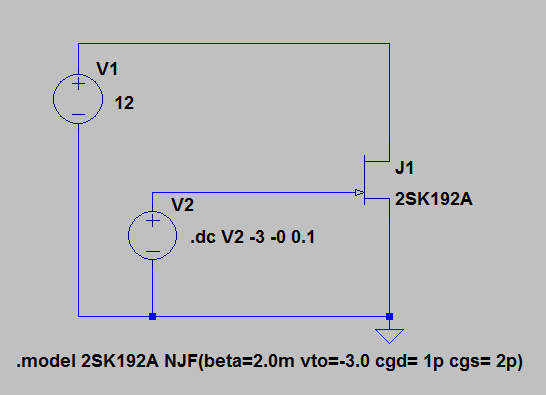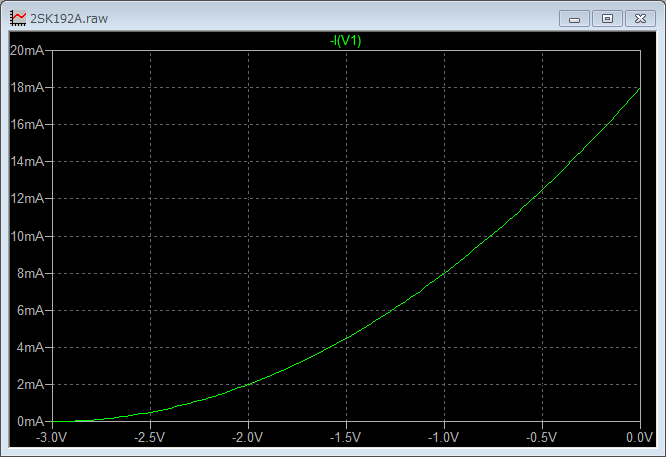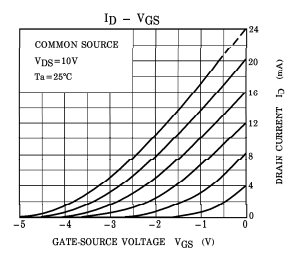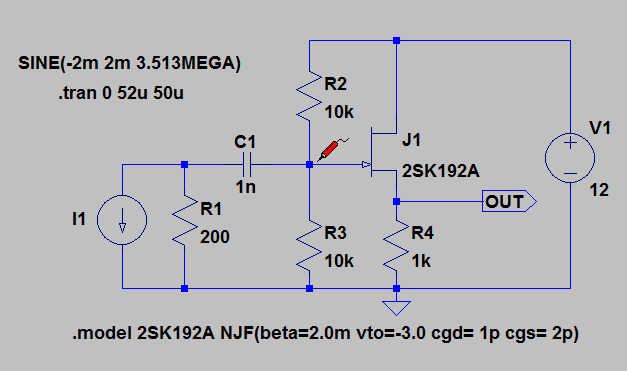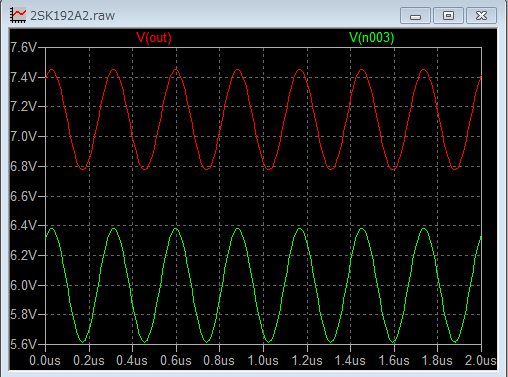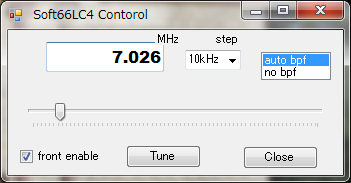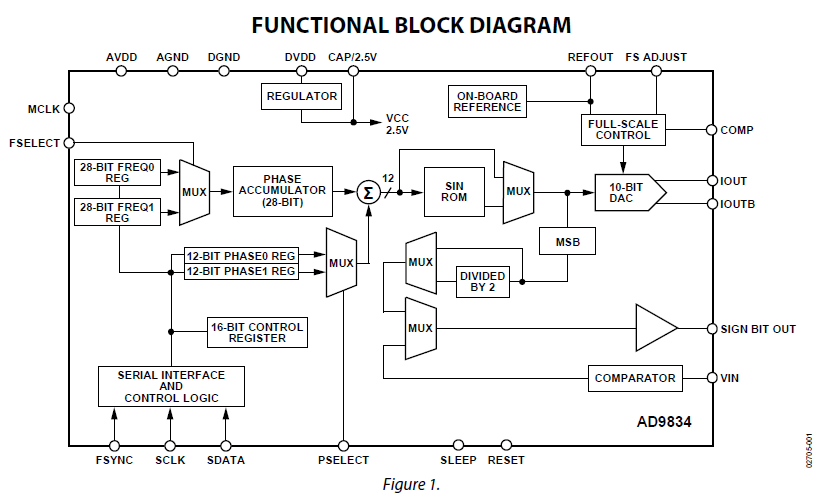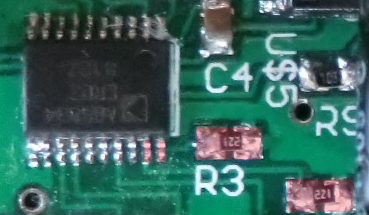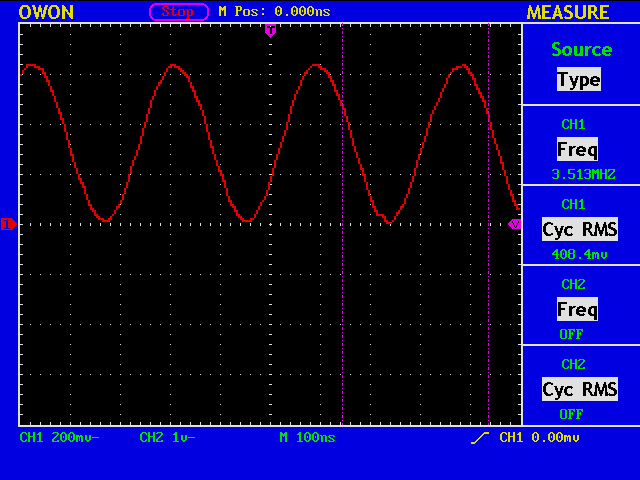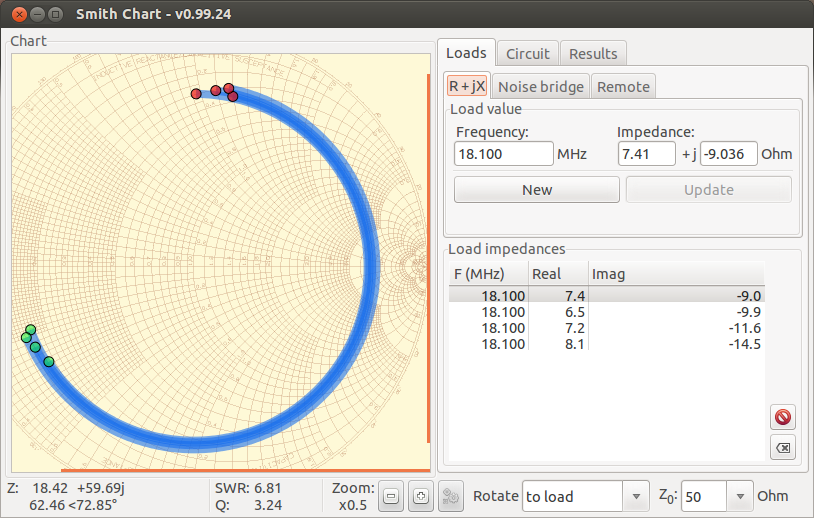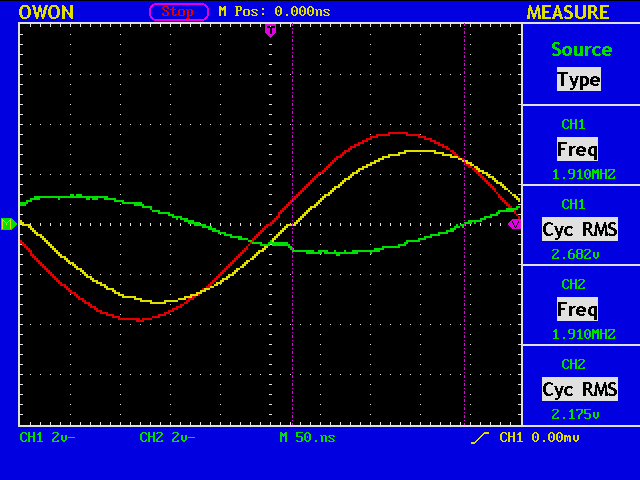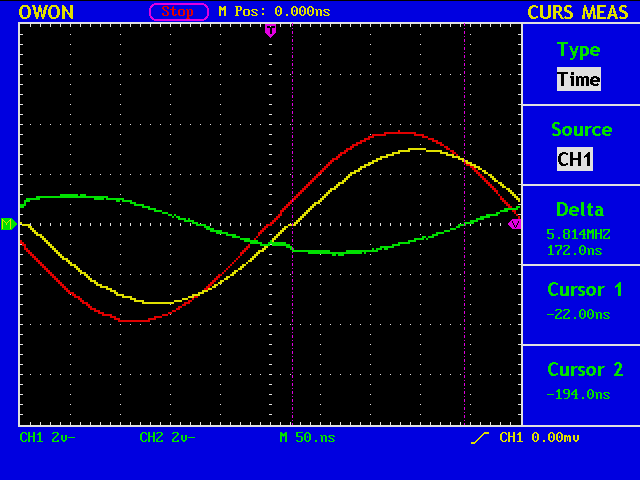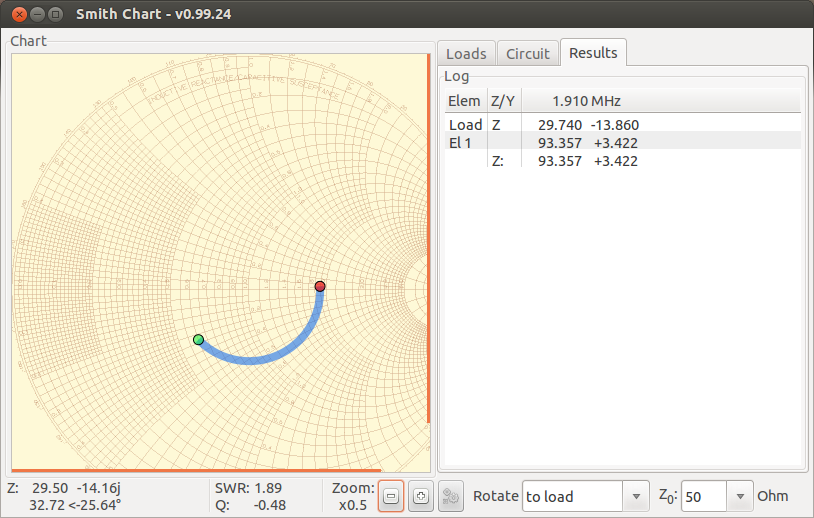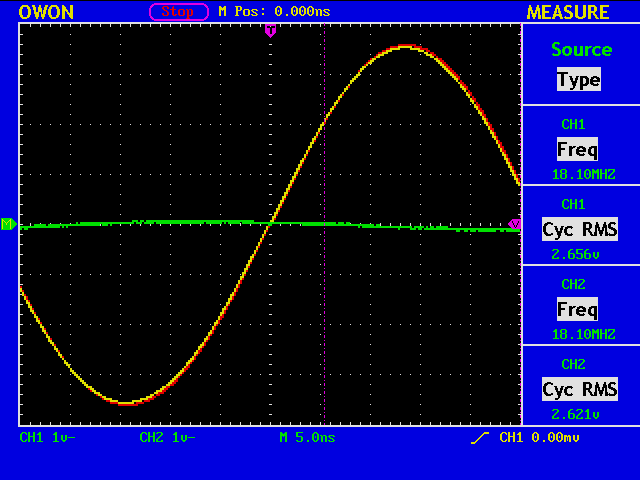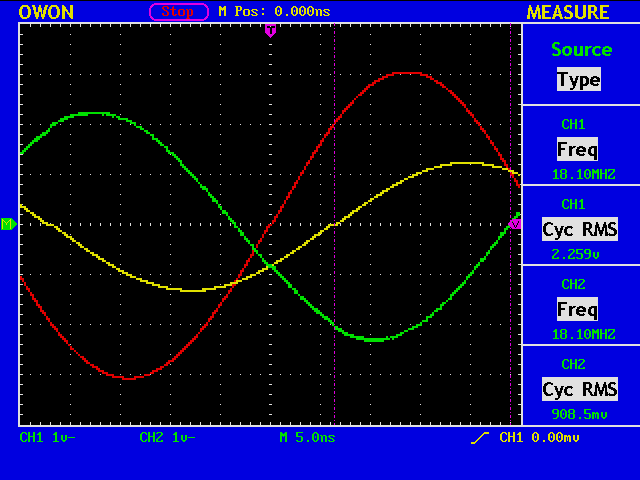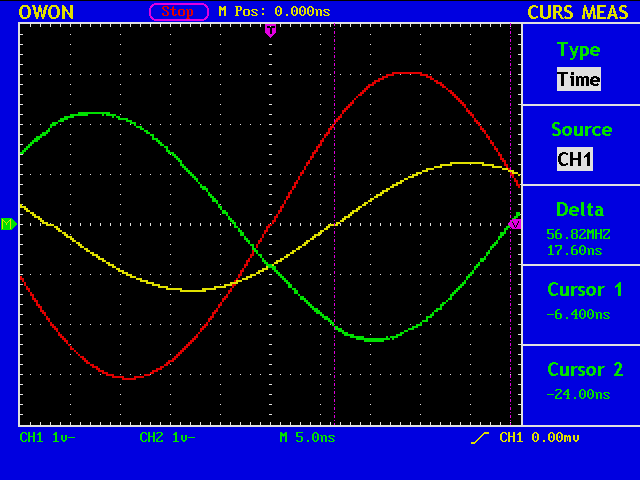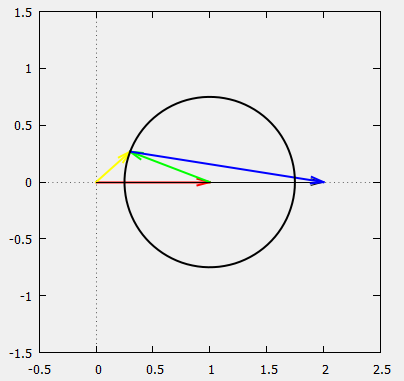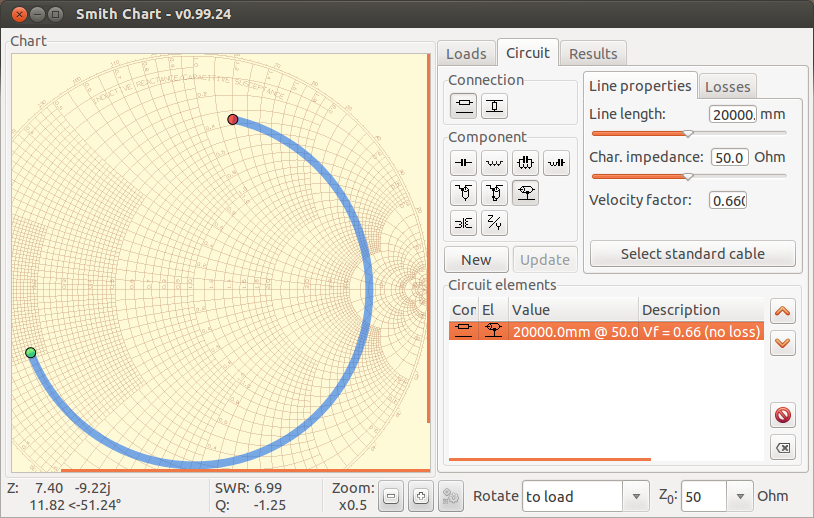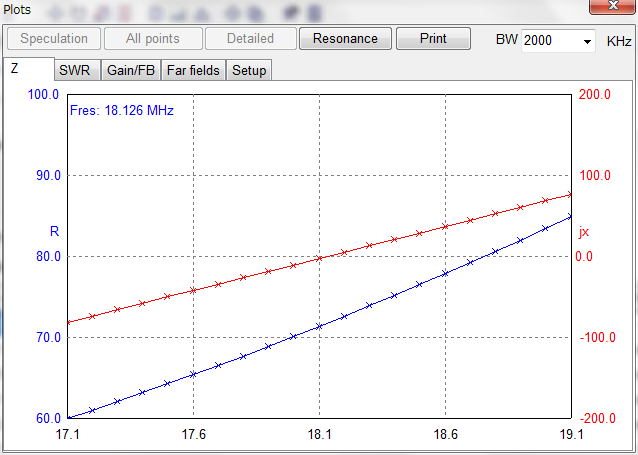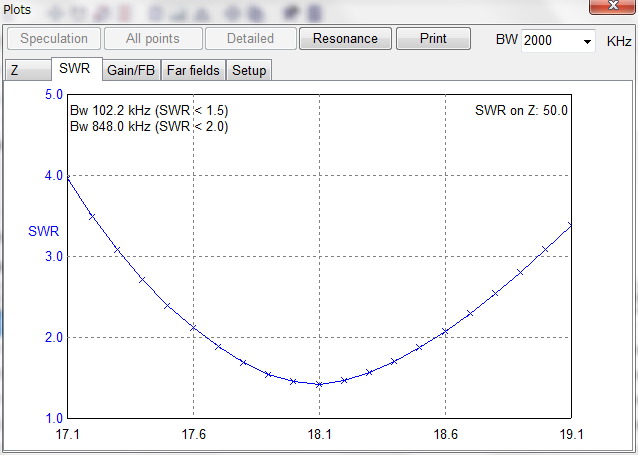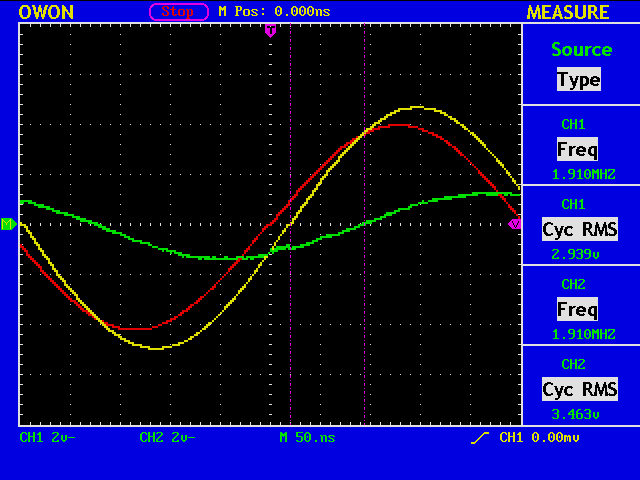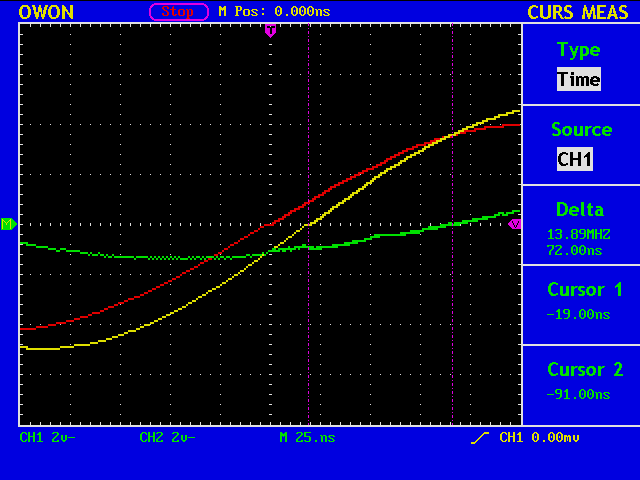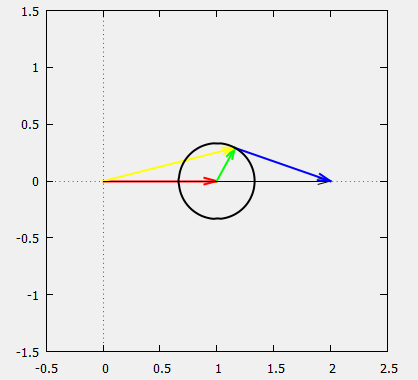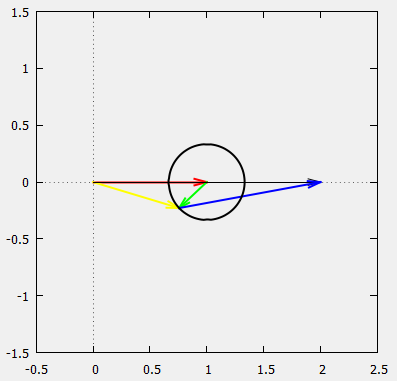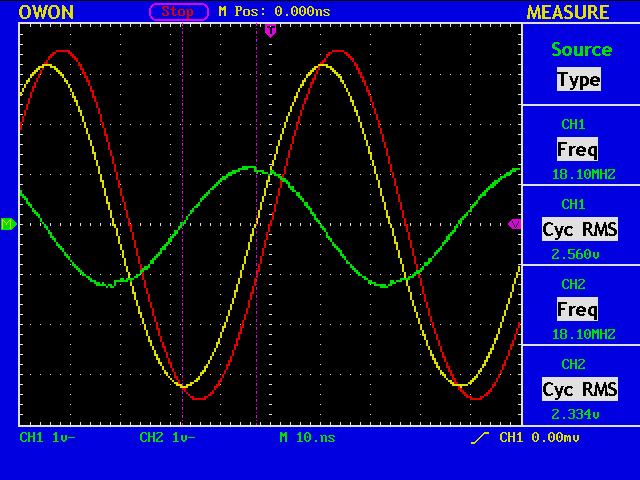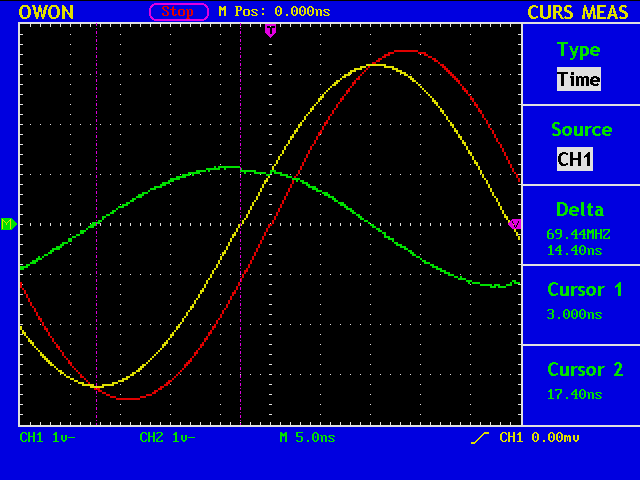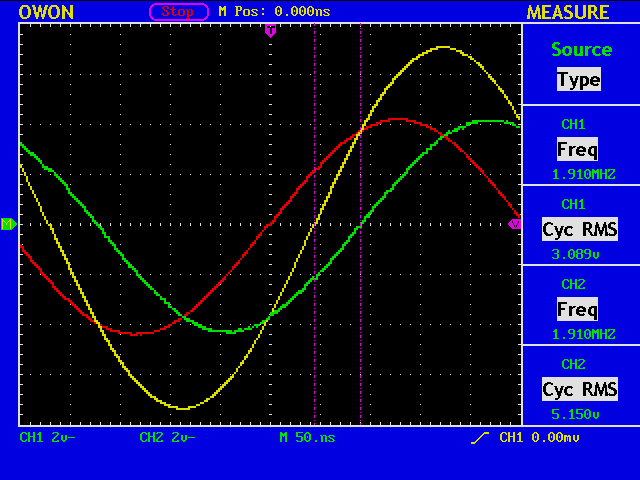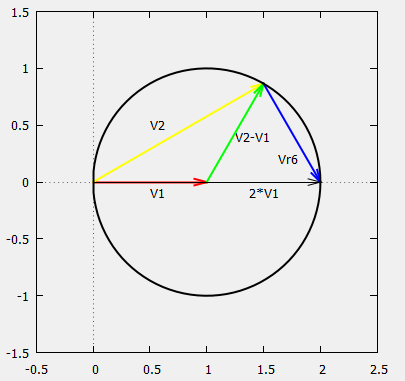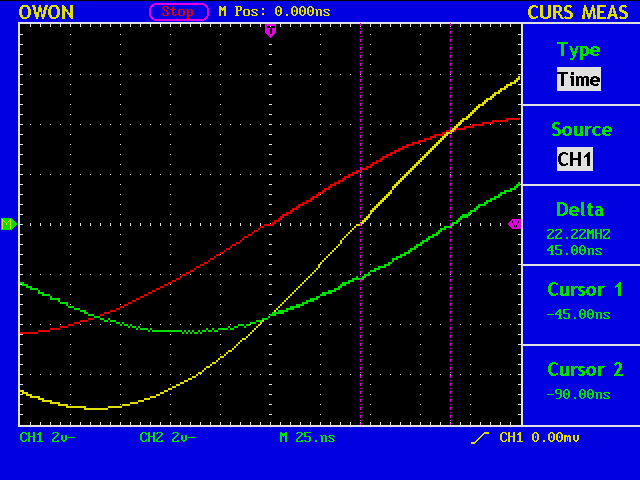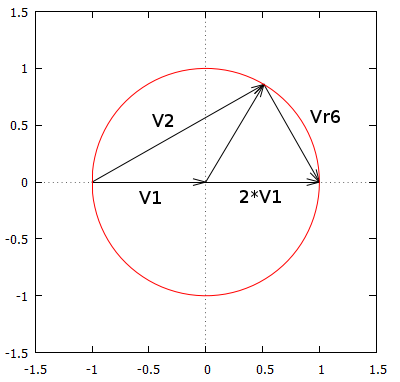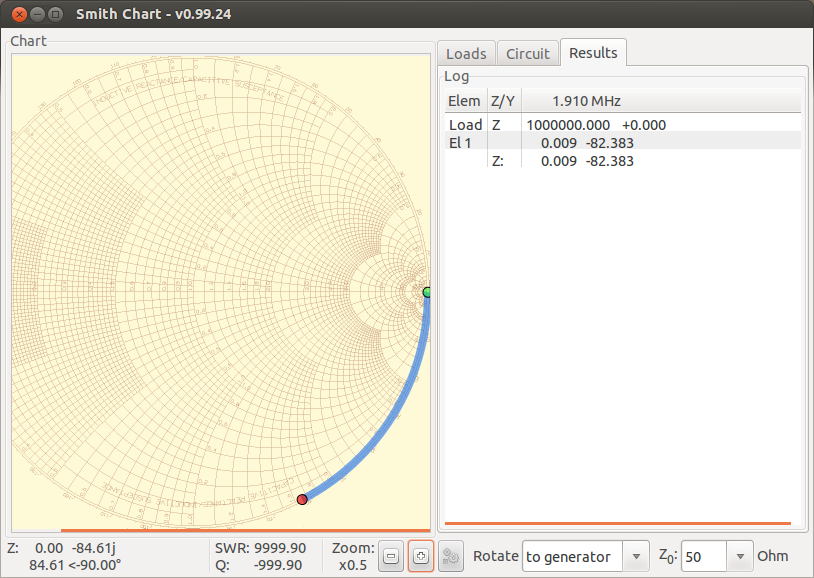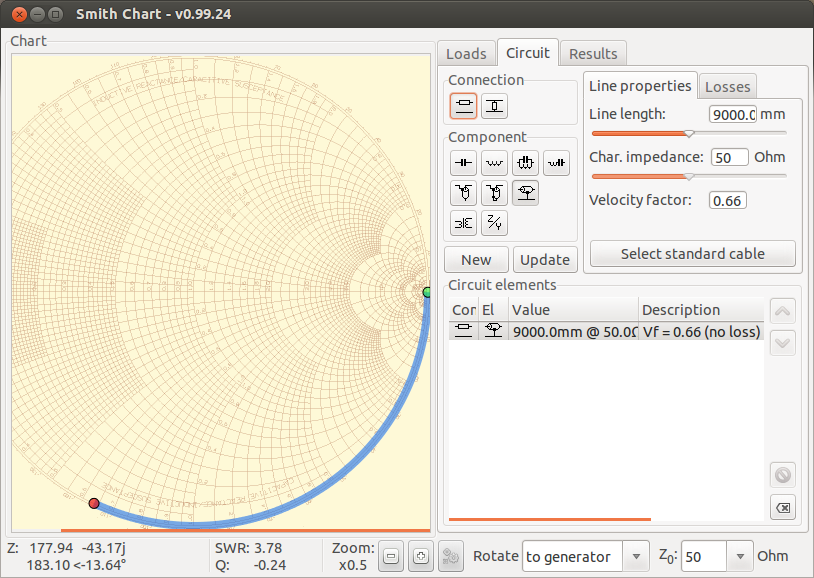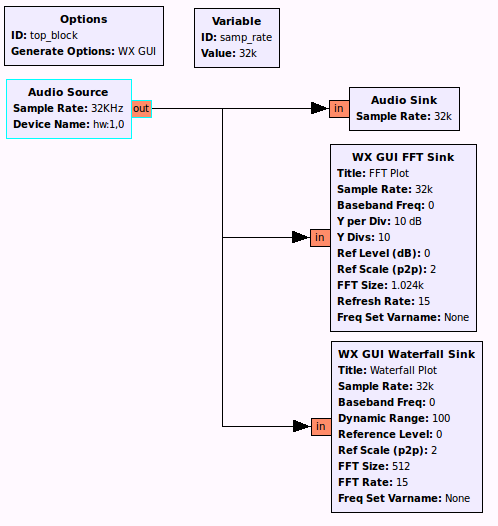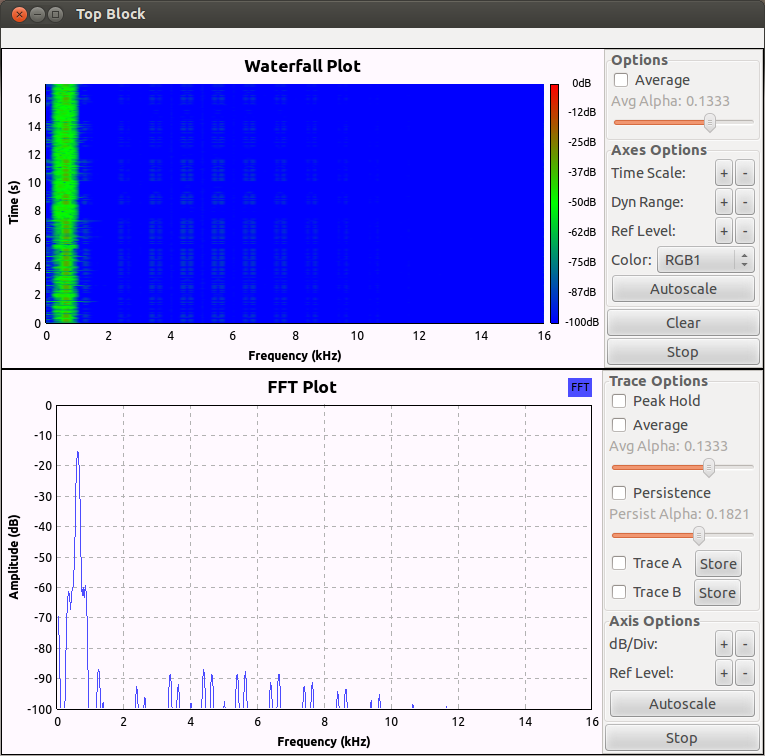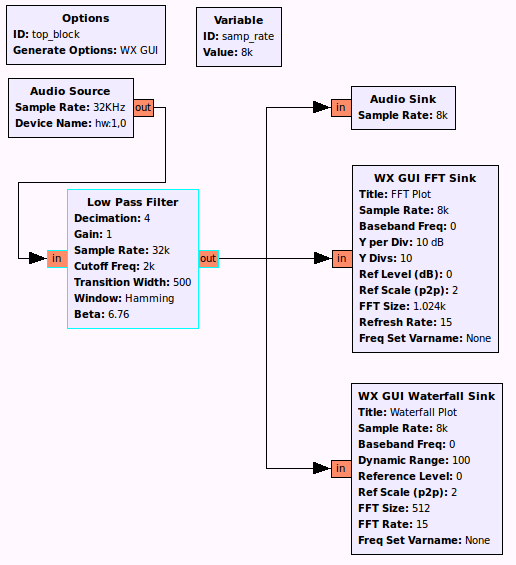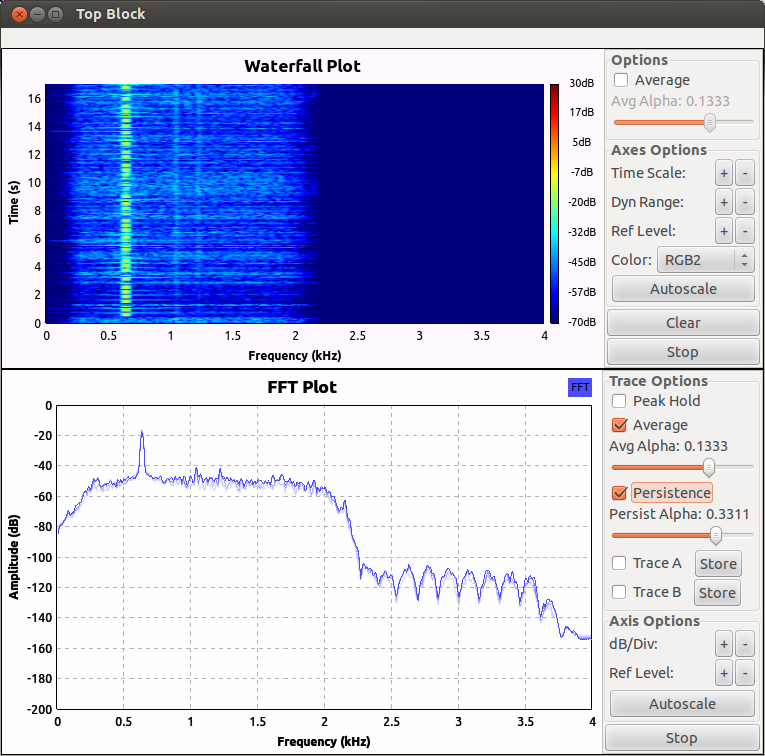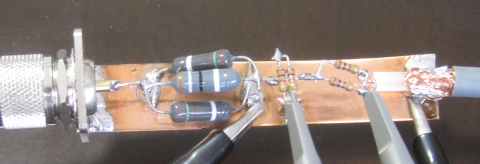
A coaxial cable (5D-2V) with length approx. 9m is used with its far end open.
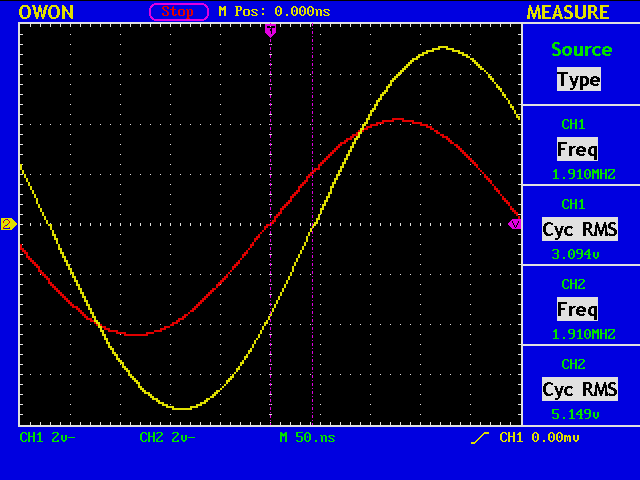
At 1910kHz (T=523.6nS). The delay is +43.00nS (+29.6deg), V1=3.094V and V2=5.256V both measured using CH1 (V2/V1=1.70).
Assuming the cable length is exactly 9m and with no cable loss (actually , the loss for 5D-2V is 26dB/km@10MHz.), the expectd delay should be:
(%i) t:2.0*360.0*(9.0/(300.0*0.67/1.91));
(%o) 61.57611940298507
(%i) tt:2.0*3.1416*(t/360.0);
(%o) 1.074708537313433
(%i) Vf:1.0+%i*0.0;
(%o) 1.0
(%i) Vr:cos(tt)+%i*sin(tt);
(%o) 0.87945145487724*%i+0.47598859073964
(%i) abs(Vf+Vr);
(%o) 1.718131887102755
(%i) atan(imagpart(Vf+Vr)/realpart(Vf+Vr))/(2.0*3.1416)*360.0;
(%o) 30.78805970149254
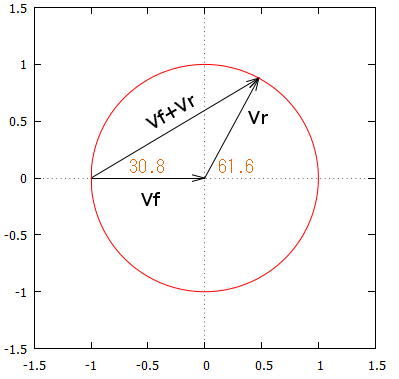
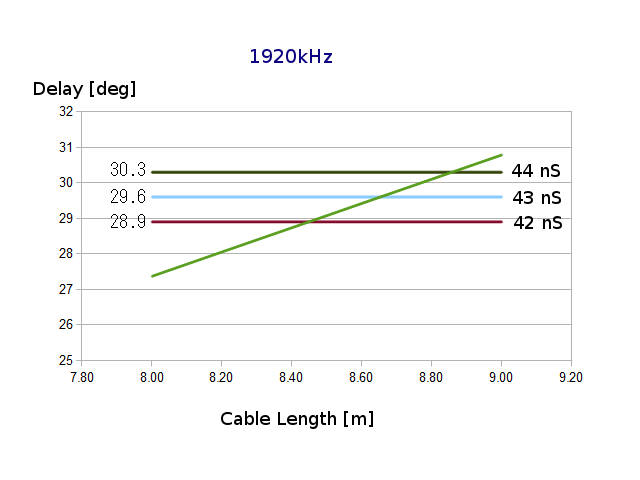
The delay is measured to be 43 [nS] at 1910kHz, but it could be anywhere between, say, 42[nS] and 44nS. In that case, the cable length could be somewhere between 8.45m and 8.85m.
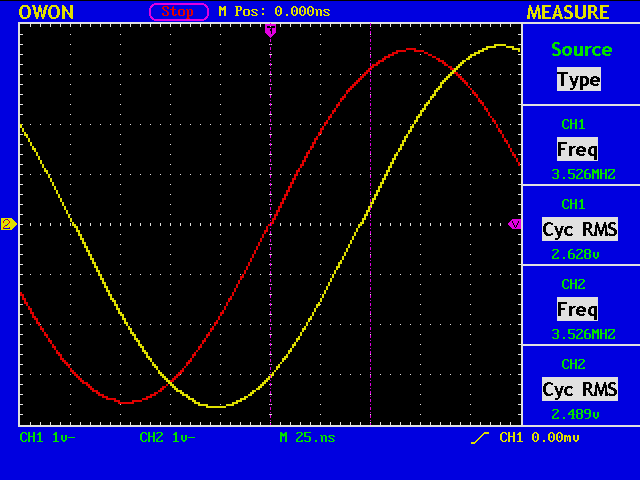
At 3526kHz (T=283.6nS). The delay is +44.80nS (+56.9deg), V1=2.641V and V2=2.694V both measured using CH1 (V2/V1=1.02).
(%i) t:2.0*360.0*(9.0/(300.0*0.67/3.526));
(%o) 113.6740298507463 <-phase rotation in deg
(%i) tt:2.0*3.1416*(t/360.0);
(%o) 1.983990734328358 <-phase rotation in rad
(%i) Vf:1.0+%i*0.0;
(%o) 1.0
(%i) Vr:cos(tt)+%i*sin(tt);
(%o) 0.91584282508565*%i-0.40153694691664
(%i) abs(Vf+Vr);
(%o) 1.094041181202386
(%i) atan(imagpart(Vf+Vr)/realpart(Vf+Vr))/(2.0*3.1416)*360.0;
(%o) 56.83701492537313
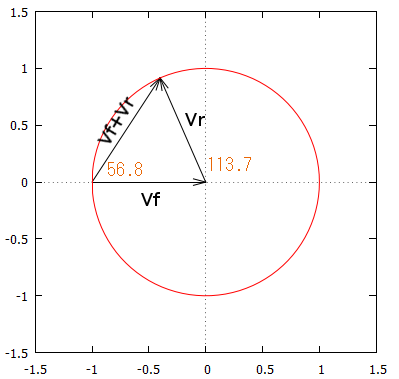
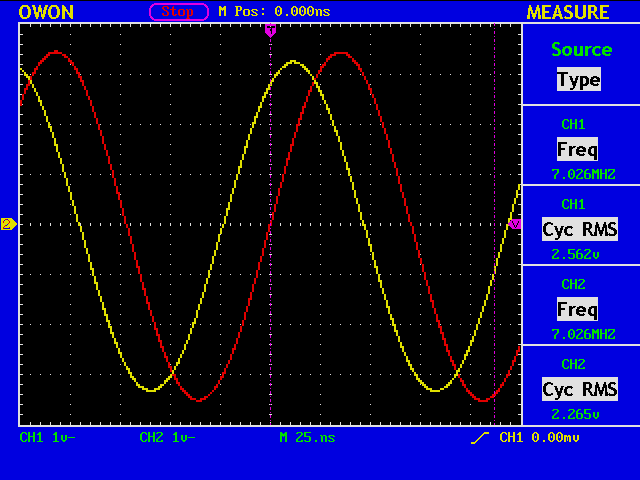
AT 7026kHz (T=142.3nS). The delay is -23.60nS (-59.7deg), V1=2.695V and V2=2.584V both measured using CH1 (V2/V1=0.959).
(%i) t:2.0*360.0*(9.0/(300.0*0.67/7.026));
(%o) 226.5098507462687
(%i) tt:2.0*3.1416*(t/360.0);
(%o) 3.953351928358209
(%i) Vf:1.0+%i*0.0;
(%o) 1.0
(%i) Vr:cos(tt)+%i*sin(tt);
(%o) -0.72549907008898*%i-0.68822314644309
(%i) abs(Vf+Vr);
(%o) 0.78965416931327
(%i) atan(imagpart(Vf+Vr)/realpart(Vf+Vr))/(2.0*3.1416)*360.0;
(%o) -66.74465370955055
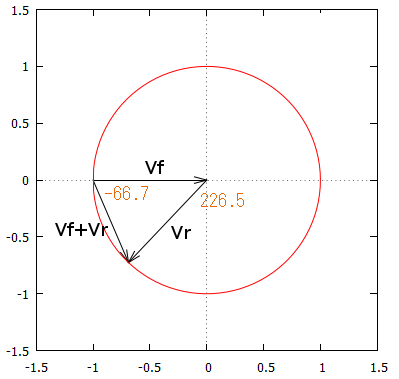
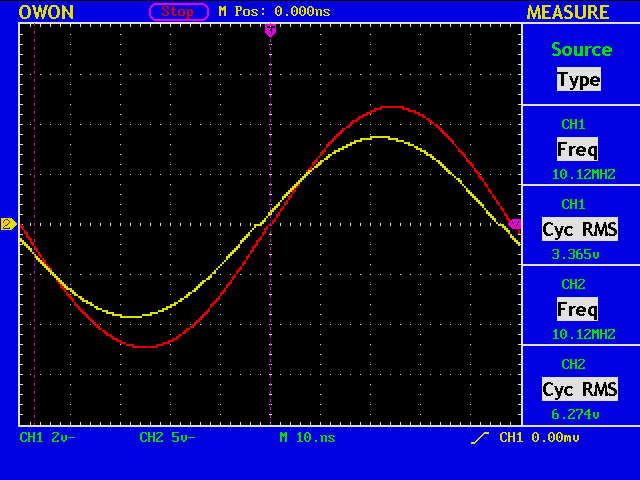
At 10120kHz (T=98.8nS). The delay is -2.40nS (-8.74deg)., V1=3.196V and V2=6.414V both measured using CH1 (V2/V1=2.01).
(%i) t:2.0*360.0*(9.0/(300.0*0.67/10.120));
(%o) 326.2567164179104
(%i) tt:2.0*3.1416*(t/360.0);
(%o) 5.694267223880596
(%i) Vr:cos(tt)+%i*sin(tt);
(%o) 0.83154212893905-0.55546168886748*%i
(%i) Vf:1.0+%i*0.0;
(%o) 1.0
(%i) abs(Vf+Vr);
(%o) 1.913918560931499
(%i) atan(imagpart(Vf+Vr)/realpart(Vf+Vr))/(2.0*3.1416)*360.0;
(%o) -16.87122087372968
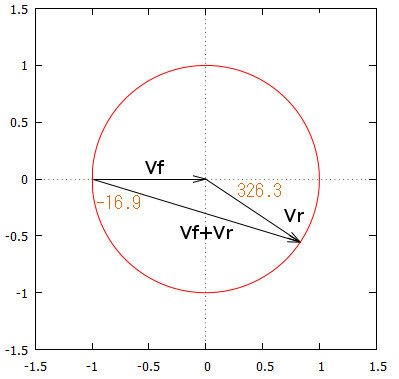
gnuplot> set size square
gnuplot> set xrange [-1.5:1.5]
gnuplot> set yrange [-1.5:1.5]
gnuplot> set zeroaxis
gnuplot> set parametric
gnuplot> x(t)=cos(t)
gnuplot> y(t)=sin(t)
gnuplot> plot [0:2*pi] x(t),y(t)
gnuplot> set arrow 1 from -1,0 to 0,0
gnuplot> set arrow 2 from 0,0 to 0.8794,0.4759
gnuplot> set arrow 3 from -1,0 to 0.4759,0.8794
gnuplot> replolt

